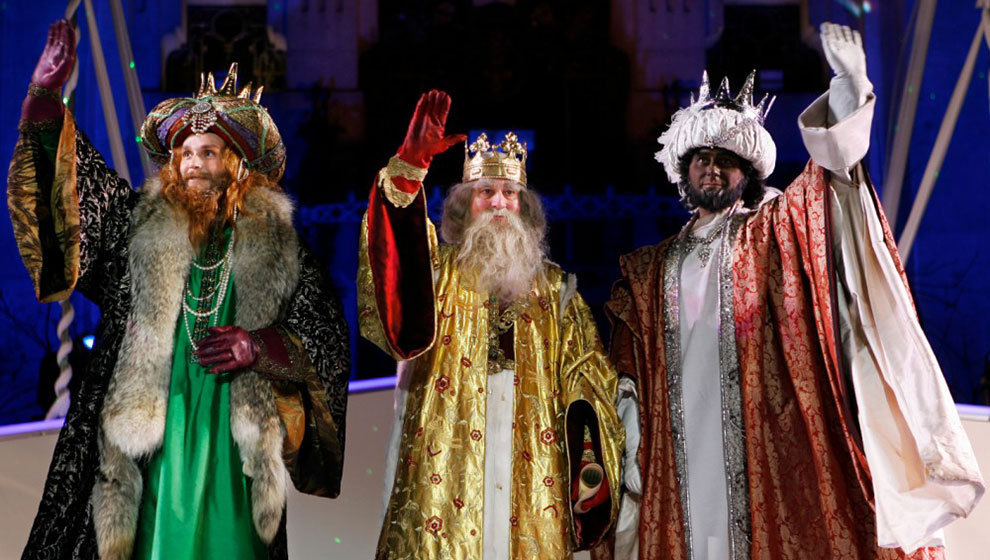December 24th – Nochebuena!
The first big family meal of the season, an elaborate dinner of seafood, turrón, maybe piglet, fish, roast beef – it varies, but there’s definitely going to be lots to eat!
December 25th – Navidad
Wake up remembering the argument you had with your bother/sister/dad at last night’s family dinner, and remember… you’re seeing them all again in 3 hours time for a big family lunch! What’s on the menu? No turkey, most likely fish or lamb instead.
And no presents in Spain on the 25th, except in families that have adopted the Father Christmas (Papa Noel) tradition as an excuse for giving their children presents now (rather than waiting until Jan 6th), thus keeping them quiet for the remainder of the holidays. Obviously this is increasingly common – good news for shareholders in El Corte Ingles.
December 31st – Nochevieja
The Spanish have a very civilised approach to the biggest anti-climax of the year: get together for a family meal! Instead of fretting for weeks beforehand about which bar or disco isn’t going to be as crap as last year when the clock strikes midnight, they simply meet once again for another enduro-eating experience.
And when the clock does strike 12, it’s traditional to eat one grape per chime. Success means a year of good luck, and sounds pretty easy. But wait until you’ve already got 8 fat grapes stuffed in your mouth and 4 more to go – those chimes come pretty fast! Fortunately there is always a large bottle of Cava on hand, and the grapes are followed by a healthy round of toasts.
January 1st – Año Nuevo
This is where those who were not born into the Spanish Christmas tradition usually break down, crave psychological council, and wonder why they didn’t marry a girl from back home instead.
Waking early on January 1st, hungover, exhausted because you just had to go out last night after the family meal ended at 2 a.m., as you roll out of bed and plant your feet on the bedroom floor, a shocking realisation washes over you… you’re having lunch with the family again in half an hour. The same family you had supper with last night, for crying out loud!
Janurary 6th – Reyes!
The marathon is all but over. Just one more get together with the relatives, usually just an afternoon tea party, and this time the joys of breaking bread with the family once more are enhanced by the giving, at last, of Christmas presents. A general sense of relief washes over the family collective, as real life, moderate eating, and a little time alone once again appear on the horizon.


